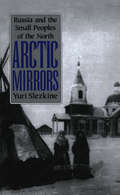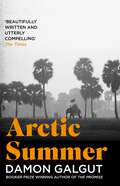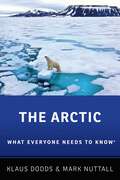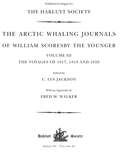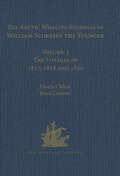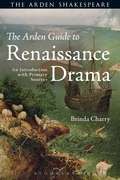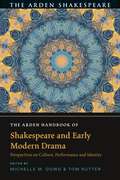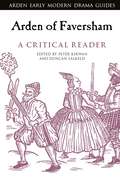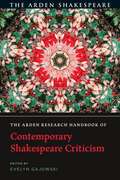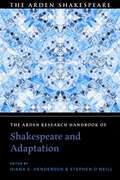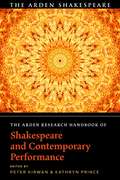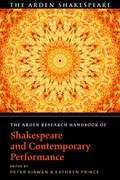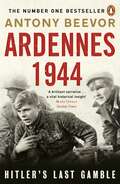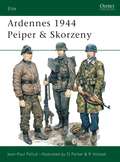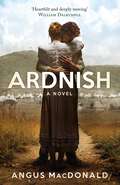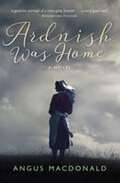- Table View
- List View
Arctic Mirrors: Russia and the Small Peoples of the North
by Yuri SlezkineFor over five hundred years the Russians wondered what kind of people their Arctic and sub-Arctic subjects were. "They have mouths between their shoulders and eyes in their chests," reported a fifteenth-century tale. "They rove around, live of their own free will, and beat the Russian people," complained a seventeenth-century Cossack. "Their actions are exceedingly rude. They do not take off their hats and do not bow to each other," huffed an eighteenth-century scholar. They are "children of nature" and "guardians of ecological balance," rhapsodized early nineteenth-century and late twentieth-century romantics. Even the Bolsheviks, who categorized the circumpolar foragers as "authentic proletarians," were repeatedly puzzled by the "peoples from the late Neolithic period who, by virtue of their extreme backwardness, cannot keep up either economically or culturally with the furious speed of the emerging socialist society."Whether described as brutes, aliens, or endangered indigenous populations, the so-called small peoples of the north have consistently remained a point of contrast for speculations on Russian identity and a convenient testing ground for policies and images that grew out of these speculations. In Arctic Mirrors, a vividly rendered history of circumpolar peoples in the Russian empire and the Russian mind, Yuri Slezkine offers the first in-depth interpretation of this relationship. No other book in any language links the history of a colonized non-Russian people to the full sweep of Russian intellectual and cultural history. Enhancing his account with vintage prints and photographs, Slezkine reenacts the procession of Russian fur traders, missionaries, tsarist bureaucrats, radical intellectuals, professional ethnographers, and commissars who struggled to reform and conceptualize this most "alien" of their subject populations.Slezkine reconstructs from a vast range of sources the successive official policies and prevailing attitudes toward the northern peoples, interweaving the resonant narratives of Russian and indigenous contemporaries with the extravagant images of popular Russian fiction. As he examines the many ironies and ambivalences involved in successive Russian attempts to overcome northern—and hence their own—otherness, Slezkine explores the wider issues of ethnic identity, cultural change, nationalist rhetoric, and not-so European colonialism.
Arctic Summer: Shortlisted for the 2015 Walter Scott Prize for Historical Fiction
by Damon GalgutShortlisted for the 2015 Walter Scott Prize for Historical FictionShortlisted for the 2015 Sunday Times Barry Ronge Fiction Prize Shortlisted for the 2015 University of Johannesburg English Literary Award Nominated for the 2014 Folio PrizeIn 1912, the SS Birmingham approaches India. On board is Morgan Forster, novelist and man of letters, who is embarking on a journey of discovery. As Morgan stands on deck, the promise of a strange new future begins to take shape before his eyes. The seeds of a story start to gather at the corner of his mind: a sense of impending menace, lust in close confines, under a hot, empty sky. It will be another twelve years, and a second time spent in India, before A Passage to India, E. M. Forster's great work of literature, is published. During these years, Morgan will come to a profound understanding of himself as a man, and of the infinite subtleties and complexity of human nature, bringing these great insights to bear in his remarkable novel.At once a fictional exploration of the life and times of one of Britain's finest novelists, his struggle to find a way of living and being, and a stunningly vivid evocation of the mysterious alchemy of the creative process, Arctic Summer is a literary masterpiece, by one of the finest writers of his generation.
Arctic Sun: The intense and atmospheric Cold War thriller from award-winning author of Moskva and Nightfall Berlin (Tom Fox Trilogy #3)
by Jack GrimwoodTHE TIMES THRILLER OF THE MONTH‘Strange alliances, personal vendettas and Cold War conspiracies build to a bloody climax in the snow’ - The Times Thriller of the Month‘This is a proper page-turning high-stakes thriller’ Crime TimeFrom the award-winning author of Moskva and Nightfall Berlin, a gripping suspense-filled thriller in the frozen North . . .Kola Peninsula, 1987. High in the Soviet Arctic, a tiny village houses an apocalyptic secret . . .When research zoologist Dr Amelia Blackburn ventures north to investigate the ravages of the Chernobyl reactor meltdown, she stumbles on the evidence of another sinister disaster on the Norway-Russia border - one that appears far from innocent. Mother Russia will stop at nothing to prevent this information from being revealed, putting Amelia and her team in grave danger from the moment they leave the site.When the news reaches London, the eyes of British intelligence turn to the one man with the knowledge and skills to bring her back to safety - and find out what has really happened in the frozen North.Major Tom Fox thought he'd put his intelligence career behind him, but wrapped in a custody battle for his young son, Charlie, a request from his high-ranking father-in-law forces his hand. When the reluctant spy reaches Russia, it quickly becomes clear that this is no ordinary mission.As Fox and Amelia fight for their lives - and their country - in Russia, Charlie is lead into dangers of his own in England. Three lives are about to be embroiled in the darkest secrets of the Cold War conflict - and a plot that, if left unchecked, will echo through history . . .Praise for Jack Grimwood'If you're missing the Cold War thrillers of le Carré, Jack Grimwood will fill the space in your heart with a thrilling splinter of ice' Val McDermid'Cold War thrillers - so atmospheric, SO SO GOOD, I recommend EXTREMELY highly' - Marian Keyes'The new le Carré . . . an absolutely brilliant page-turner . . . if you love thrillers, Jack Grimwood is a name you need to remember' BBC Radio 2 The Sara Cox Show'For those who enjoy vintage le Carré' Ian Rankin'Mesmerising . . . something special in the arena of international thrillers' Financial Times'Your new favourite thriller writer' Independent'Top-notch ... the suspense never wavers' Crimetime'The rejuvenation of the espionage thriller continues apace' Guardian
ARCTIC WENK C: What Everyone Needs to Know® (What Everyone Needs To Know®)
by Klaus Dodds Mark NuttallConversations defining the Arctic region often provoke debate and controversy -- for scientists, this lies in the imprecise and imaginary line known as the Arctic Circle; for countries like Canada, Russia, the United States, and Denmark, such discussions are based in competition for land and resources; for indigenous communities, those discussions are also rooted in issues of rights. These shifting lines are only made murkier by the threat of global climate change. In the Arctic Ocean, the consequences of Earth's warming trend are most immediately observable in the multi-year and perennial ice that has begun to melt, which threatens ice-dependent microorganisms and, eventually, will disrupt all of Arctic life and raise sea levels globally. In The Arctic: What Everyone Needs to Know®, Klaus Dodds and Mark Nuttall offer concise answers to the myriad questions that arise when looking at the circumpolar North. They focus on its peoples, politics, environment, resource development, and conservation to provide critical information about how changes there can, and will, affect our entire globe and all of its inhabitants. Dodds and Nuttall explore how the Arctic's importance has grown over time, the region's role during the Cold War, indigenous communities and their history, and the past and future of the Arctic's governance, among other crucial topics.
The Arctic Whaling Journals of William Scoresby the Younger: Volume III: The voyages of 1817, 1818 and 1820 (Hakluyt Society, Third Series)
by William ScoresbyThis is the third and final volume in the set of William Scoresby's journals. It contains the unpublished accounts of his three voyages 1817, 1818 and 1820. During the years of the voyages in this volume Scoresby's life changed profoundly. An unsuccessful hunt for whales in 1817 led to a break with the Whitby shipowners, and command of the Fame in 1818 in partnership with his father. The partnership was a brief one, and at the end of 1818 Scoresby broke with his father and moved to Liverpool, finding new partners, completing the writing of An Account of the Arctic Regions and watching the construction of his new ship, the Baffin. Meanwhile he suffered a severe financial loss and made a profound religious commitment. After his first summer ashore for many years in 1819, he brought back to Liverpool in 1820 a 'full ship' of seventeen whales, despite being faced by mutineers in the crew who earlier had been involved in piracy in the Caribbean and, apparently, hoped to seize the Baffin 'and convey her and her valuable cargo to a foreign country'. In each of the journals, Scoresby wrote detailed descriptions of his landings: on Jan Mayen in 1817, western Spitsbergen in 1818, and the Langanes peninsula in northeast Iceland in 1820. The 1817 voyage, when Scoresby and others found the Greenland Sea relatively free of ice, involved him in the renewed British interest in arctic maritime exploration after the Napoleonic Wars. The Introduction to this volume contains a major reappraisal of Scoresby's role, especially in regard to his alleged mistreatment by John Barrow, Second Secretary of the Admiralty. The volume also contains an appendix by Fred M. Walker on the building of wooden whaleships such as the Baffin that were capable of routine ice navigation under sail as far north as 80°N, based on Scoresby's account, as Owners' Representative, at the beginning of the 1820 journal.
The Arctic Whaling Journals of William Scoresby the Younger: Volume III: The voyages of 1817, 1818 and 1820 (Hakluyt Society, Third Series)
by William ScoresbyThis is the third and final volume in the set of William Scoresby's journals. It contains the unpublished accounts of his three voyages 1817, 1818 and 1820. During the years of the voyages in this volume Scoresby's life changed profoundly. An unsuccessful hunt for whales in 1817 led to a break with the Whitby shipowners, and command of the Fame in 1818 in partnership with his father. The partnership was a brief one, and at the end of 1818 Scoresby broke with his father and moved to Liverpool, finding new partners, completing the writing of An Account of the Arctic Regions and watching the construction of his new ship, the Baffin. Meanwhile he suffered a severe financial loss and made a profound religious commitment. After his first summer ashore for many years in 1819, he brought back to Liverpool in 1820 a 'full ship' of seventeen whales, despite being faced by mutineers in the crew who earlier had been involved in piracy in the Caribbean and, apparently, hoped to seize the Baffin 'and convey her and her valuable cargo to a foreign country'. In each of the journals, Scoresby wrote detailed descriptions of his landings: on Jan Mayen in 1817, western Spitsbergen in 1818, and the Langanes peninsula in northeast Iceland in 1820. The 1817 voyage, when Scoresby and others found the Greenland Sea relatively free of ice, involved him in the renewed British interest in arctic maritime exploration after the Napoleonic Wars. The Introduction to this volume contains a major reappraisal of Scoresby's role, especially in regard to his alleged mistreatment by John Barrow, Second Secretary of the Admiralty. The volume also contains an appendix by Fred M. Walker on the building of wooden whaleships such as the Baffin that were capable of routine ice navigation under sail as far north as 80°N, based on Scoresby's account, as Owners' Representative, at the beginning of the 1820 journal.
The Arctic Whaling Journals of William Scoresby the Younger / Volume I / The Voyages of 1811, 1812 and 1813 (Hakluyt Society, Third Series)
by William ScoresbyWilliam Scoresby (1789-1857) made his first voyage in the whaler Resolution from Whitby to the Greenland Sea, west of Spitsbergen, in 1800. Three years later he was formally apprenticed to his father and another three years saw him promoted to chief officer. On 5 October 1810, his twenty-first birthday, ’the earliest at which, by reason of age, I could legally hold a command’, his father moved to Greenock and another ship, relinquishing the Resolution to his son. Another ten years would see the publication of what has been described as ’one of the most remarkable books in the English language’, his two-volume An Account of the Arctic Regions, with a History and Description of the Northern Whale-Fishery (1820). Even before he took command of the Resolution, two developments had occurred that, when combined with his seamanship and whaling skill, were to make that book ’the foundation stone of Arctic science’ and cause the journals of his annual voyages to be remarkable accounts in their own right. First, Scoresby had studied, during two brief winters at the University of Edinburgh. Teachers such as John Playfair and Robert Jameson had made him aware of the scientific importance of his arctic experience. Together with Sir Joseph Banks, the president of the Royal Society, they encouraged him to observe, experiment and record, and provided opportunities for his data to be published. Secondly, this encouragement, and the study habits he developed at Edinburgh, led Scoresby to expand the logs of his arctic voyages into lengthy journals that contained scientific records and social and religious comment as well as detailed descriptions of navigation and whaling.
The Arctic Whaling Journals of William Scoresby the Younger / Volume I / The Voyages of 1811, 1812 and 1813 (Hakluyt Society, Third Series)
by William ScoresbyWilliam Scoresby (1789-1857) made his first voyage in the whaler Resolution from Whitby to the Greenland Sea, west of Spitsbergen, in 1800. Three years later he was formally apprenticed to his father and another three years saw him promoted to chief officer. On 5 October 1810, his twenty-first birthday, ’the earliest at which, by reason of age, I could legally hold a command’, his father moved to Greenock and another ship, relinquishing the Resolution to his son. Another ten years would see the publication of what has been described as ’one of the most remarkable books in the English language’, his two-volume An Account of the Arctic Regions, with a History and Description of the Northern Whale-Fishery (1820). Even before he took command of the Resolution, two developments had occurred that, when combined with his seamanship and whaling skill, were to make that book ’the foundation stone of Arctic science’ and cause the journals of his annual voyages to be remarkable accounts in their own right. First, Scoresby had studied, during two brief winters at the University of Edinburgh. Teachers such as John Playfair and Robert Jameson had made him aware of the scientific importance of his arctic experience. Together with Sir Joseph Banks, the president of the Royal Society, they encouraged him to observe, experiment and record, and provided opportunities for his data to be published. Secondly, this encouragement, and the study habits he developed at Edinburgh, led Scoresby to expand the logs of his arctic voyages into lengthy journals that contained scientific records and social and religious comment as well as detailed descriptions of navigation and whaling.
The Arden Guide to Renaissance Drama: An Introduction with Primary Sources
by Brinda CharryThe Arden Guide to Renaissance Drama is a single critical and contextual resource for students embarking on an in-depth exploration of early modern drama, providing both critical insight and accessible contextual information. This companion equips students with the information needed to situate the plays in their socio-political, intellectual and literary contexts. Divided into two parts, it introduces students to the major authors and significant dramatic texts of the period and emphasises the importance of both a historicist and close-reading approach to better engage with these works.The Guide offers:· primary texts from key early modern scholars such as Machiavelli, Heywood and Sidney· contextual information vital to a full understanding of the drama of the period· close readings of 14 of the most widely studied play texts by Shakespeare and his contemporaries· a single resource to accompany any study of early modern dramaThis is an ideal companion for students of Renaissance drama, offering students and teachers a range of primary contextual sources to illuminate their understanding alongside close critical readings of the major plays of the period.
The Arden Guide to Renaissance Drama: An Introduction with Primary Sources
by Brinda CharryThe Arden Guide to Renaissance Drama is a single critical and contextual resource for students embarking on an in-depth exploration of early modern drama, providing both critical insight and accessible contextual information. This companion equips students with the information needed to situate the plays in their socio-political, intellectual and literary contexts. Divided into two parts, it introduces students to the major authors and significant dramatic texts of the period and emphasises the importance of both a historicist and close-reading approach to better engage with these works.The Guide offers:· primary texts from key early modern scholars such as Machiavelli, Heywood and Sidney· contextual information vital to a full understanding of the drama of the period· close readings of 14 of the most widely studied play texts by Shakespeare and his contemporaries· a single resource to accompany any study of early modern dramaThis is an ideal companion for students of Renaissance drama, offering students and teachers a range of primary contextual sources to illuminate their understanding alongside close critical readings of the major plays of the period.
The Arden Handbook of Shakespeare and Early Modern Drama: Perspectives on Culture, Performance and Identity (The Arden Shakespeare Handbooks)
by Michelle M. Dowd and Tom RutterHow does our understanding of early modern performance, culture and identity change when we decentre Shakespeare? And how might a more inclusive approach to early modern drama help enable students to discuss a range of issues, including race and gender, in more productive ways?Underpinned by these questions, this collection offers a wide-ranging, authoritative guide to research on drama in Shakespeare's England, mapping the variety of approaches to the context and work of Shakespeare and his contemporaries. By paying attention to repertory, performance in and beyond playhouses, modes of performance, and lost and less-studied plays, the handbook reshapes our critical narratives about early modern drama. Chapters explore early modern drama through a range of cultural contexts and approaches, from material culture and emotion studies to early modern race work and new directions in disability and trans studies, as well as contemporary performance. Running through the collection is a shared focus on contemporary concerns, with contributors exploring how race, religion, environment, gender and sexuality animate 16th- and 17th-century drama and, crucially, the questions we bring to our study, teaching and research of it. The volume includes a ground-breaking assessment of the chronology of early modern drama, a survey of resources and an annotated bibliography to assist researchers as they pursue their own avenues of inquiry. Combining original research with an account of the current state of play, The Arden Handbook of Shakespeare and Early Modern Drama will be an invaluable resource both for experienced scholars and for those beginning work in the field.
The Arden Handbook of Shakespeare and Early Modern Drama: Perspectives on Culture, Performance and Identity (The Arden Shakespeare Handbooks)
How does our understanding of early modern performance, culture and identity change when we decentre Shakespeare? And how might a more inclusive approach to early modern drama help enable students to discuss a range of issues, including race and gender, in more productive ways?Underpinned by these questions, this collection offers a wide-ranging, authoritative guide to research on drama in Shakespeare's England, mapping the variety of approaches to the context and work of Shakespeare and his contemporaries. By paying attention to repertory, performance in and beyond playhouses, modes of performance, and lost and less-studied plays, the handbook reshapes our critical narratives about early modern drama. Chapters explore early modern drama through a range of cultural contexts and approaches, from material culture and emotion studies to early modern race work and new directions in disability and trans studies, as well as contemporary performance. Running through the collection is a shared focus on contemporary concerns, with contributors exploring how race, religion, environment, gender and sexuality animate 16th- and 17th-century drama and, crucially, the questions we bring to our study, teaching and research of it. The volume includes a ground-breaking assessment of the chronology of early modern drama, a survey of resources and an annotated bibliography to assist researchers as they pursue their own avenues of inquiry. Combining original research with an account of the current state of play, The Arden Handbook of Shakespeare and Early Modern Drama will be an invaluable resource both for experienced scholars and for those beginning work in the field.
Arden of Faversham: A Critical Reader (Arden Early Modern Drama Guides)
by Professor Lisa Hopkins Dr Andrew HiscockOne of the earliest domestic tragedies, Arden of Faversham is a powerful Elizabethan drama based on the real-life murder of Thomas Arden. This Critical Reader presents the first collection of essays specifically focused upon Arden of Faversham. It highlights the way in which this important play from the early 1590s stands at several different critical intersections. Focused research chapters propose new directions for exploring the play in the light of ecocriticism, genre studies, critical race studies and narratives of dispossession. It also looks forward to Arden of Faversham's role and status in a less author-centred critical climate. Chapters explore how this anonymous and canonically marginal play has been approached in the past by scholars and theatre-makers and the frameworks that have offered productive insight into its unique features. The volume includes chapters covering a wide range of critical discourses and resources available for its study, as well as offering practical approaches to the play in the classroom.
Arden of Faversham: A Critical Reader (Arden Early Modern Drama Guides)
by Professor Lisa Hopkins Dr Andrew HiscockOne of the earliest domestic tragedies, Arden of Faversham is a powerful Elizabethan drama based on the real-life murder of Thomas Arden. This Critical Reader presents the first collection of essays specifically focused upon Arden of Faversham. It highlights the way in which this important play from the early 1590s stands at several different critical intersections. Focused research chapters propose new directions for exploring the play in the light of ecocriticism, genre studies, critical race studies and narratives of dispossession. It also looks forward to Arden of Faversham's role and status in a less author-centred critical climate. Chapters explore how this anonymous and canonically marginal play has been approached in the past by scholars and theatre-makers and the frameworks that have offered productive insight into its unique features. The volume includes chapters covering a wide range of critical discourses and resources available for its study, as well as offering practical approaches to the play in the classroom.
The Arden Research Handbook of Contemporary Shakespeare Criticism (The Arden Shakespeare Handbooks)
by Evelyn GajowskiThe Arden Research Handbook of Contemporary Shakespeare Criticism is a wide-ranging, authoritative guide to research on critical approaches to Shakespeare by an international team of leading scholars. It contains chapters on 20 specific critical practices, each grounded in analysis of a Shakespeare play. These practices range from foundational approaches including character studies, close reading and genre studies, through those that emerged in the 1970s and 1980s that challenged the preconceptions on which traditional liberal humanism is based, including feminism, cultural materialism and new historicism. Perspectives drawn from postcolonial, queer studies and critical race studies, besides more recent critical practices including presentism, ecofeminism and cognitive ethology all receive detailed treatment.In addition to its coverage of distinct critical approaches, the handbook contains various sections that provide non-specialists with practical help: an A–Z glossary of key terms and concepts, a chronology of major publications and events, an introduction to resources for study of the field and a substantial annotated bibliography.
The Arden Research Handbook of Contemporary Shakespeare Criticism (The Arden Shakespeare Handbooks)
by Evelyn GajowskiThe Arden Research Handbook of Contemporary Shakespeare Criticism is a wide-ranging, authoritative guide to research on critical approaches to Shakespeare by an international team of leading scholars. It contains chapters on 20 specific critical practices, each grounded in analysis of a Shakespeare play. These practices range from foundational approaches including character studies, close reading and genre studies, through those that emerged in the 1970s and 1980s that challenged the preconceptions on which traditional liberal humanism is based, including feminism, cultural materialism and new historicism. Perspectives drawn from postcolonial, queer studies and critical race studies, besides more recent critical practices including presentism, ecofeminism and cognitive ethology all receive detailed treatment.In addition to its coverage of distinct critical approaches, the handbook contains various sections that provide non-specialists with practical help: an A–Z glossary of key terms and concepts, a chronology of major publications and events, an introduction to resources for study of the field and a substantial annotated bibliography.
The Arden Research Handbook of Shakespeare and Adaptation (The Arden Shakespeare Handbooks)
by Diana E. Henderson and Stephen O’NeillThe Arden Research Handbook of Shakespeare and Adaptation explores the dynamics of adapted Shakespeare across a range of literary genres and new media forms. This comprehensive reference and research resource maps the field of Shakespeare adaptation studies, identifying theories of adaptation, their application in practice and the methodologies that underpin them. It investigates current research and points towards future lines of enquiry for students, researchers and creative practitioners of Shakespeare adaptation. The opening section on research methods and problems considers definitions and theories of Shakespeare adaptation and emphasises how Shakespeare is both adaptor and adapted.A central section develops these theoretical concerns through a series of case studies that move across a range of genres, media forms and cultures to ask not only how Shakespeare is variously transfigured, hybridised and valorised through adaptational play, but also how adaptations produce interpretive communities, and within these potentially new literacies, modes of engagement and sensory pleasures. The volume's third section provides the reader with uniquely detailed insights into creative adaptation, with writers and practice-based researchers reflecting on their close collaborations with Shakespeare's works as an aesthetic, ethical and political encounter. The Handbook further establishes the conceptual parameters of the field through detailed, practical resources that will aid the specialist and non-specialist reader alike, including a guide to research resources and an annotated bibliography.
The Arden Research Handbook of Shakespeare and Adaptation (The Arden Shakespeare Handbooks)
The Arden Research Handbook of Shakespeare and Adaptation explores the dynamics of adapted Shakespeare across a range of literary genres and new media forms. This comprehensive reference and research resource maps the field of Shakespeare adaptation studies, identifying theories of adaptation, their application in practice and the methodologies that underpin them. It investigates current research and points towards future lines of enquiry for students, researchers and creative practitioners of Shakespeare adaptation. The opening section on research methods and problems considers definitions and theories of Shakespeare adaptation and emphasises how Shakespeare is both adaptor and adapted.A central section develops these theoretical concerns through a series of case studies that move across a range of genres, media forms and cultures to ask not only how Shakespeare is variously transfigured, hybridised and valorised through adaptational play, but also how adaptations produce interpretive communities, and within these potentially new literacies, modes of engagement and sensory pleasures. The volume's third section provides the reader with uniquely detailed insights into creative adaptation, with writers and practice-based researchers reflecting on their close collaborations with Shakespeare's works as an aesthetic, ethical and political encounter. The Handbook further establishes the conceptual parameters of the field through detailed, practical resources that will aid the specialist and non-specialist reader alike, including a guide to research resources and an annotated bibliography.
The Arden Research Handbook of Shakespeare and Contemporary Performance (The Arden Shakespeare Handbooks)
by Peter Kirwan and Kathryn PrinceThe Arden Research Handbook of Shakespeare and Contemporary Performance is a wide-ranging, authoritative guide to research on Shakespeare and performance studies by an international team of leading scholars. It contains chapters on the key methods and questions surrounding the performance event, the audience, and the archive – the primary sources on which performance studies draws. It identifies the recurring trends and fruitful lines of inquiry that are generating the most urgent work in the field, but also contextualises these within the histories and methods on which researchers build. A central section of research-focused essays offers case studies of present areas of enquiry, from new approaches to space, bodies and language to work on the technologies of remediation and original practices, from consideration of fandoms and the cultural capital invested in Shakespeare and his contemporaries to political and ethical interventions in performance practice. A distinctive feature of the volume is a curated section focusing on practitioners, in which leading directors, writers, actors, producers, and other theatre professionals comment on Shakespeare in performance and what they see as the key areas, challenges and provocations for researchers to explore.In addition, the Handbook contains various sections that provide non-specialists with practical help: an A-Z of key terms and concepts, a guide to research methods and problems, a chronology of major publications and events, an introduction to resources for study of the field, and a substantial annotated bibliography. The Arden Research Handbook of Shakespeare and Contemporary Performance is a reference work aimed at advanced undergraduate and graduate students as well as scholars and libraries, a guide to beginning or developing research in the field, and an essential companion for all those interested in Shakespeare and performance.
The Arden Research Handbook of Shakespeare and Contemporary Performance (The Arden Shakespeare Handbooks)
The Arden Research Handbook of Shakespeare and Contemporary Performance is a wide-ranging, authoritative guide to research on Shakespeare and performance studies by an international team of leading scholars. It contains chapters on the key methods and questions surrounding the performance event, the audience, and the archive – the primary sources on which performance studies draws. It identifies the recurring trends and fruitful lines of inquiry that are generating the most urgent work in the field, but also contextualises these within the histories and methods on which researchers build. A central section of research-focused essays offers case studies of present areas of enquiry, from new approaches to space, bodies and language to work on the technologies of remediation and original practices, from consideration of fandoms and the cultural capital invested in Shakespeare and his contemporaries to political and ethical interventions in performance practice. A distinctive feature of the volume is a curated section focusing on practitioners, in which leading directors, writers, actors, producers, and other theatre professionals comment on Shakespeare in performance and what they see as the key areas, challenges and provocations for researchers to explore.In addition, the Handbook contains various sections that provide non-specialists with practical help: an A-Z of key terms and concepts, a guide to research methods and problems, a chronology of major publications and events, an introduction to resources for study of the field, and a substantial annotated bibliography. The Arden Research Handbook of Shakespeare and Contemporary Performance is a reference work aimed at advanced undergraduate and graduate students as well as scholars and libraries, a guide to beginning or developing research in the field, and an essential companion for all those interested in Shakespeare and performance.
Ardennes 1944: Hitler's Last Gamble
by Antony BeevorFrom the bestselling author of Stalingrad, Berlin and D-Day, Antony Beevor's Ardennes 1944: Hitler's Last Gamble tells the story of the German's ill-fated final stand.On 16 December, 1944, Hitler launched his 'last gamble' in the snow-covered forests and gorges of the Ardennes. He believed he could split the Allies by driving all the way to Antwerp, then force the Canadians and the British out of the war. Although his generals were doubtful of success, younger officers and NCOs were desperate to believe that their homes and families could be saved from the vengeful Red Army approaching from the east. Many were exultant at the prospect of striking back. The Ardennes offensive, with more than a million men involved, became the greatest battle of the war in western Europe. American troops, taken by surprise, found themselves fighting two panzer armies. Belgian civilians fled, justifiably afraid of German revenge. Panic spread even to Paris. While many American soldiers fled or surrendered, others held on heroically, creating breakwaters which slowed the German advance. The harsh winter conditions and the savagery of the battle became comparable to the eastern front. And after massacres by the Waffen-SS, even American generals approved when their men shot down surrendering Germans. The Ardennes was the battle which finally broke the back of the Wehrmacht.'Revealing, profound and thoroughly unputdownable, Stalingrad is an extraordinary achievement which transcends its genre' Vitali Vitaliev, Daily Telegraph (on Stalingrad)'This brilliant storyteller. . . makes us feel the chaos and the fear as if every drop of blood was our own: that is his gift. It is much more than just a humane account; it is compellingly readable, deeply researched and beautifully written' Simon Sebag Montefiore, Spectator (on Berlin)'This is a terrific, inspiring, heart-breaking book. It makes the argument all over again that the world would be an infinitely better place if it didn't keep producing subject matter for military historians: but as long as it does, we can rejoice that at the top of that profession is Antony Beevor' Sam Leith, Daily Mail (on D-Day)'His book is the definitive history. This is World War II as Tolstoy would have described it - the great and the small' Gerard DeGroot, Washington Post (on The Second World War)Antony Beevor is the renowned author of Stalingrad, which won the Samuel Johnson Prize, the Wolfson Prize for History and the Hawthornden Prize for Literature, and Berlin, which received the first Longman-History Today Trustees' Award. His books have appeared in thirty foreign editions and sold over six million copies.
Ardennes 1944 Peiper & Skorzeny (Elite)
by David Parker Jean-Paul PalludFrom the earliest planning stages of the German counter-offensive in the Ardennes, Hitler was convinced of the importance of taking the Meuse bridges. He resolved that, when his forces broke through the US lines, one special unit should be dressed in American uniforms and issued with American weapons and vehicles. In this guise they could take advantage of the surprise and shock of the breakthrough, and move forward to the Meuse bridges as if they were retreating Americans. Jean-Paul Pallud details their organisation and the fateful sequence of events that followed.
Ardennes 1944 Peiper & Skorzeny (Elite #11)
by David Parker Jean-Paul PalludFrom the earliest planning stages of the German counter-offensive in the Ardennes, Hitler was convinced of the importance of taking the Meuse bridges. He resolved that, when his forces broke through the US lines, one special unit should be dressed in American uniforms and issued with American weapons and vehicles. In this guise they could take advantage of the surprise and shock of the breakthrough, and move forward to the Meuse bridges as if they were retreating Americans. Jean-Paul Pallud details their organisation and the fateful sequence of events that followed.
Ardnish: A Novel (The\ardnish Ser. #2)
by Angus MacDonaldPraise for the Ardnish Series'What I really enjoyed about this book was its beauty, an enthralling read that is both brutal and poetic' – Daily Record‘A fast-paced narrative with deeply likeable characters ... far more than yet another wartime love story ... impossible to put down’ – Scottish Field, Book of the Month‘Not only a gripping and at times horrifying adventure . . . it is also an important piece of social history. But perhaps above all, it is a tale of the importance of true love and determination’ – Scots MagazineArdnish, the Highlands of Scotland, 1944. On his deathbed, Donald John Gillies sends for a priest to hear his last confession. During his 85 years he has witnessed much – world wars, the loss of family through death and emigration, and the daily struggles which face the small remote community.Waiting anxiously for the priest, his mind travels back to the dusty plains of South Africa in 1901, where he fought as a Lovat Scout during the Boer War, and where he met the woman who was the love of his life. Forced to abandon her and her young daughter in a British concentration camp, DJ returns to Scotland and his old life after his camp is ambushed by Boers and many of his fellow soldiers are massacred.As he lies dying, an unexpected visitor arrives at Ardnish. making it more imperative then ever for DJ to come to terms with the past and to make peace with himself – and his family – while there is still time.
Ardnish Was Home: A Novel (Ardnish Ser.)
by Angus MacDonaldGallipoli, 1915. Donald Peter Gillies, a young Lovat Scout soldier, lies in a field hospital, blinded by the Turks. There he falls in love with his Queen Alexandra Corps nurse, Louise, and she with him. As they talk in the quiet hours he tells her of life in the West Highlands of Scotland, where he grew up, and she in turn tells her own story of a harsh and unforgiving upbringing in the Welsh valleys. Cut off from Allied troops, Donald and Louise make a perilous escape through Turkey, Greece and on to Malta – the first stage on their journey to a new life together in Donald’s beloved Ardnish. But just as they are within reach of home, Fate deals an unexpected hand . . .
